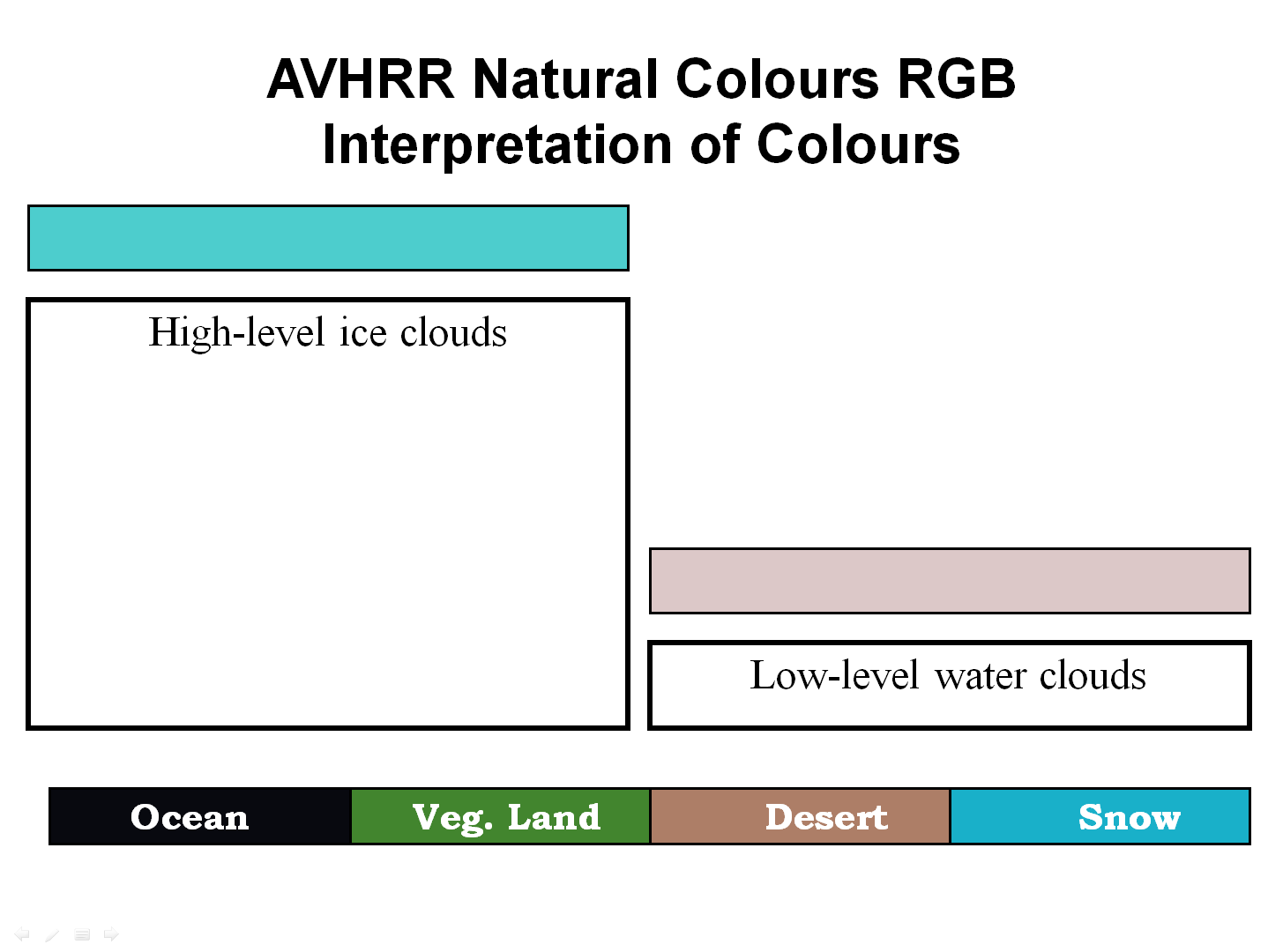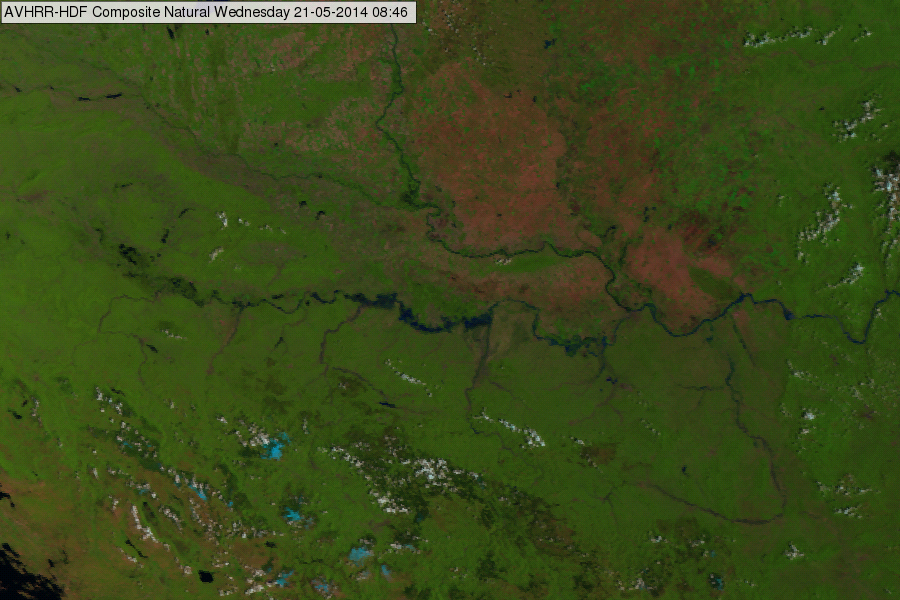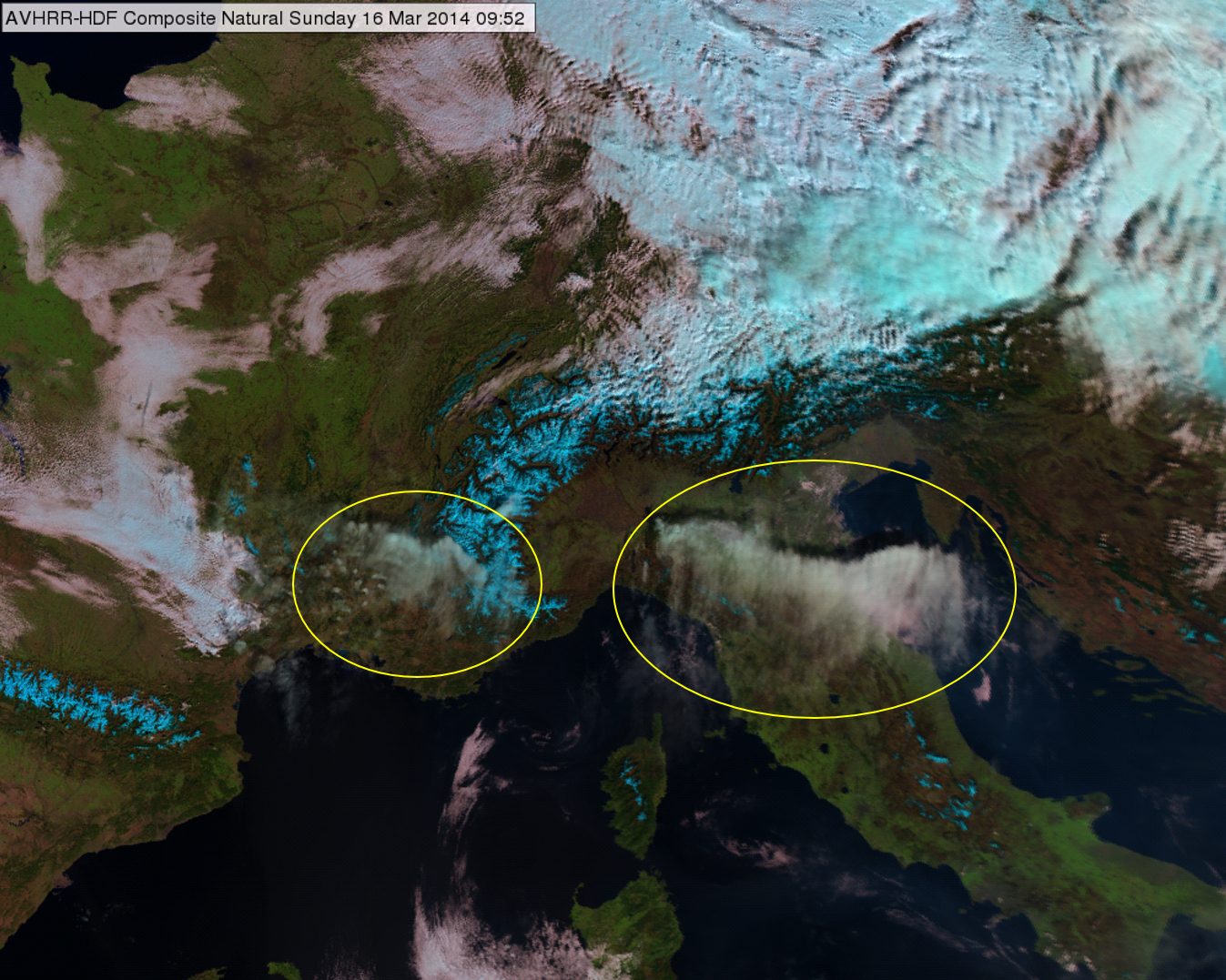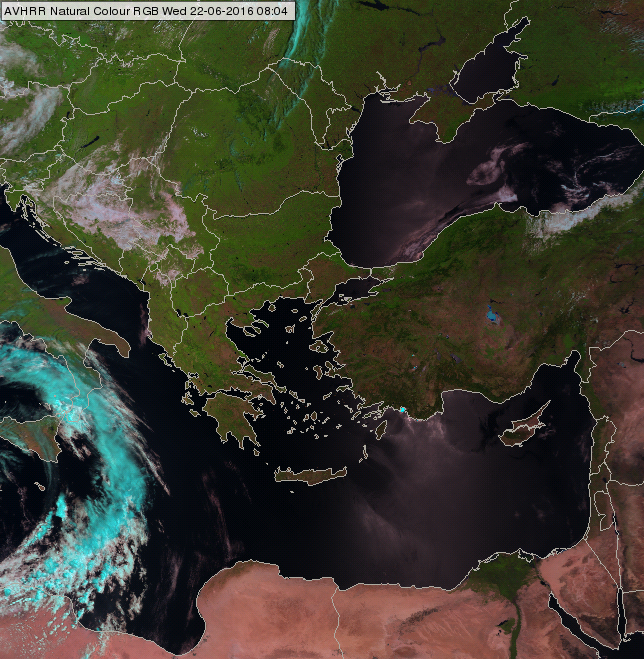Typical Colors
Fig. 7 shows the typical colors of the Natural Color RGB images. The images have many more colors with many different tones beyond those seen here. Note that the shades and brightness of the colors may vary across the swath (along the scanning direction). Read more about this in the 'Effects of the scanning geometry' chapter.
Clouds:
- Opaque water clouds are whitish, in some cases with some light pink shades.
- Opaque ice clouds appear cyan.
- The colors of semi-transparent clouds depend on many factors, for example on their thickness and the color of the underlying surface.
- Very thin semi-transparent clouds are hard to see.
- Thicker semi-transparent clouds have cyan shades. The actual color also depends on the color of the underlying surface.
Cloud-free areas:
- Open water surfaces (sea, ocean, big deep lakes) are black - except for increased aerosol content (like dust cloud) or sunglint.
- Snow on land appears cyan.
- Ice-covered sea is a darker cyan.
- The color of snow-free land reflects the green vegetation fraction ('chlorophyll content'). More vegetation - more green:
- vegetated areas are green,
- bare soil is brownish,
- desert is brownish pink.
Figure 7: Typical colors of the AVHRR Natural Color RGB
There are good color contrasts between snow and land and between snow and water clouds. Unfortunately snow and thick ice clouds have similar colors, with slight differences. Their structure and the movement observed in consecutive images can help tell the difference.
Fig. 8 was taken over Croatia, Bosnia and Serbia. It shows the Sava River region during a flood. The colors of the river and land are clear in this almost cloud-free image. Some mountain peaks are still covered by snow.
Figure 8: AVHRR, Natural Colour RGB image on 21 May 2014 at 08:46 UTC. Sava River region of Croatia, Bosnia and Serbia
Reflectivity in the NIR1.61 channel depends not only on the cloud phase but also slightly on the cloud top particle size. This can cause unexpected colors, such as in cases of high-level lee clouds consisting of extremely small ice crystals, for example. Such ice clouds can be almost as reflective as water clouds; see the clouds south and southwest of the Alps in Fig. 9.
Figure 9: AVHRR, Natural Colour RGB image of the Alps on 16 March 2014 at 09:52 UTC
Open water surfaces (ocean, sea) are usually black in AVHRR Natural Colour RGB images. Areas with sunglint are an exception. Sunglint is the mirror-like reflection of the sun off a water surface. Sunglint occurs on cloud-free ocean, sea, river and lake surfaces at a given geometry between the sun and satellite viewing directions. An increased amount of solar energy is reflected off the water in areas with sunglint. Smooth ocean water becomes a 'silvery mirror', while rougher surface waters (with big waves) appear less bright. Since oceans and seas are nearly never perfectly smooth or calm, the sun's reflection gets blurred, giving the water's surface a washed-out appearance. Since the reflection is more intense in the NIR1.61 channel than the VIS0.63 and NIR0.87 channels, the sunglint appears pinkish in Natural Colour RGB images. Fig. 10 shows sunglint on the Mediterranean and the Black Sea. Note that in Metop AVHRR images with a morning orbit the sunglint typically lies on the eastern side of the satellite ground track.
Figure 10: Sunglint over the Mediterranean and the Black Sea in the AVHRR Natural Colour RGB image on 22 June 2016 at 08:04 UTC



